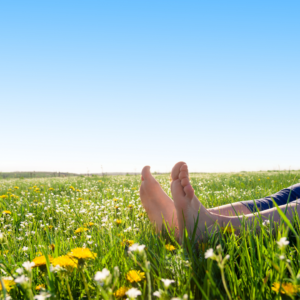Orthotics: What are they *really* doing?

Recently, I’ve become curious about why some folks are reluctant to take off their shoes in Nia class in the name of “needing to wear orthotics”.
In my research I found this great piece in the NY Times. It describes the research of Dr. Nigg, a professor of biomechanics and co-director of the Human Performance Lab at the University of Calgary.
For over 30 years, Dr. Nigg has studied how orthotics affect motion, stress on joints and muscle activity.
He discovered that, during a run, orthotics have a big (negative) impact on the muscles and joints. So much so that muscles may have to work up to 50% harder to achieve the same movement without orthotics. At the same time, a person wearing orthotics during a run is increasing the stress on the joints by as much as 50%.
Furthermore, when it comes to “corrective” orthotics, Dr. Nigg says they do not correct so much as lead to a reduction in muscle strength.
Ok, but hasn’t there been research to prove the effectiveness of orthotics? Why else would they be so widely prescribed?
Well Dr. Nigg and colleagues reviewed and analyzed studies on orthotics and their impact when it comes to injury prevention. Interestingly, nearly all published studies, they found, lacked scientific rigour. In many studies they did not include comparison groups who were not wearing orthotics. In other studies they excluded from their analysis those who dropped out of the study, (likely because they were not benefiting from the treatment).
So maybe orthotics are helpful, but there just isn’t the research to conclude that with any confidence.
Recently I’ve been healing my foot (after a little fall down some stairs). I’ve been using the “through movement we find health” mantra that Nia taught me. So I’m still teaching classes, but at times I’ll need to sit or modify the movement. But I’m still moving and letting my body be my guide by responding to my body’s signals to adapt movements.
I’m not immobilizing my foot, because, as Dr. Nibb points out, that only leads to weakness. If I immobilized my foot, I’d have not only weakness but likely stiffness to contend with. I also don’t want to dull my connection to sensation in my feet and ankles by caging my feet in shoes – this sensation that balanced and knowing where I am in space. So yeah, movement is my medicine.
Nia has taught me to default to the body. That the body is designed to function in a certain way and that if we are using our bodies as designed, they will be good to us. Using those 7,000 sensory nerves in the bottoms of our feet to inform our movement choices while strengthening our foundation (our feet) makes a whole lotta sense to me!
